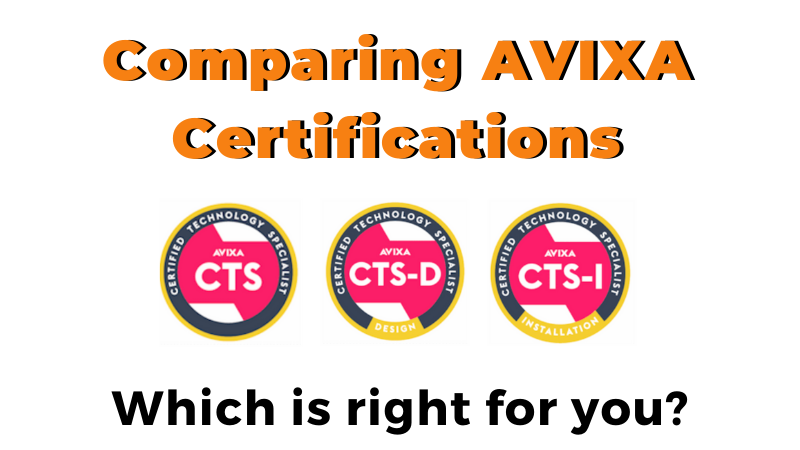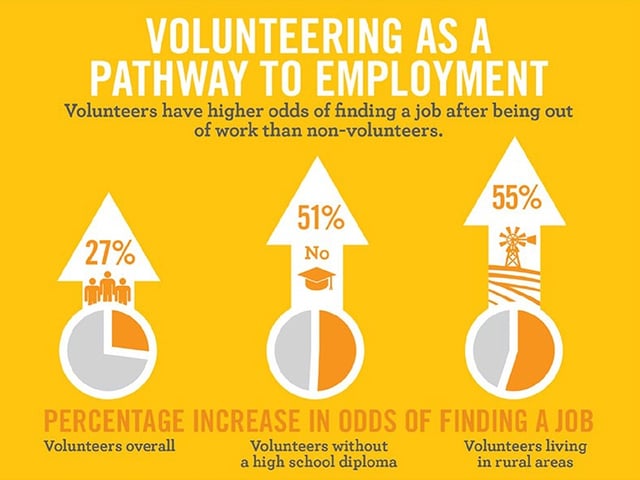How to Prepare for the AVIXA CTS Exam
So you want to advance your career in the Audiovisual industry...
Well, an AVIXA CTS Credentials will certainly help you do that.
Whether you’re a brand new technician looking to get your feet wet, a seasoned installer looking to sharpen your skills, or looking to advance into a management position, AVIXA has the solution for you.
The process of getting certified can seem overwhelming to some, but I promise you it is well worth it in the end.
In order to make things easier for you, we’ve outlined each step you need to take to get that highly regarded CTS credential.
Prerequisite Learning
Before you can start diving into the material that is on the actual CTS exams, it is crucial that you have a fundamental understanding of the Audiovisual Industry as a whole.
Here are a few of the most recommended courses/certifications:
1. Quickstart to the AV Industry Online
Designed as a crash course and a complete introduction to the Audiovisual Industry. Perfect for newbies or anyone interested in exploring a career in AV.
2. Essentials of AV Technology
Learn the basic science that goes into creating an Audiovisual integrated experience.
3. AV Math Online
Master common AV calculations and increase your confidence through practical industry-related examples and problems
4. AV-Technologist Certificate
This is a great way to test your proficiency in the fundamentals of AV and also prepare you for the CTS certifications.
Test Preparation
As with most other things, preparation is key. Here are a few exam preparation tips to ensure that you are comfortable with the material and confident going into your CTS exam.
1. Read the CTS Handbook.
The CTS handbook will give over:
- CTS Application and Exam Process
- Exam Related Information
- Application Related Information
- CTS Program Administration Information
- Exam Preparation and Education
- Exam Outlines and Applications
2. Read the CTS Exam Study Guide
The CTS Exam Study guide will cover CTS exam objectives:
- Develop a Site scope
- Conduct a Site Survey
- Troubleshoot and Repair AV Solutions
Each chapter includes in-depth explanations of material as well as review questions to test your knowledge
3. CTS Prep Three-day Course
Th CTS Prep Course is an optional in-person course for those who want a more hands-on study experience. This course will cover:
- CTS Exam format
- Test Taking Strategies
- Exam Expectations
- Examine CTS study needs with drills
- Review Exam Content Areas
If, you’d rather learn from the comfort of your own home check out CTS Prep Virtual Classroom
4. Hands-on Experience
For a lot of people, the best way to learn and retain information is by doing. Hands-on experience installing, configuring, and troubleshooting AV solutions will give you an added boost in your overall proficiency in AV systems.
Submit Application
There are two options for submitting an application:
- Apply Online
- Download and Submit a PDF Application via fax, email, or mail
Schedule Exam
Schedule an interview directly through the Pearson VUE testing center
Retake Test
Candidates who do not pass their initial CTS exam can take the exam two additional times ($130 / Additional Attempt) with a minimum 30 day period between attempts.
Candidates must also fill out a Retest Application
Renewing Certification
CTS credentials are awarded for a three-year period. In order to renew your certification, you must maintain minimum levels of continuing education during each three-year period.
To find out more about renewing your Avixa Credential click here
Summary
The AVIXA CTS is one of the best-known, sought after credentials in the Audiovisual industry. If you’re serious about your career in the AV industry then do yourself a favor and take the time to become CTS certified.






.png?width=696&name=IS%20A%20COVER%20LETTER%20IMPORTANT_%20(1).png)










